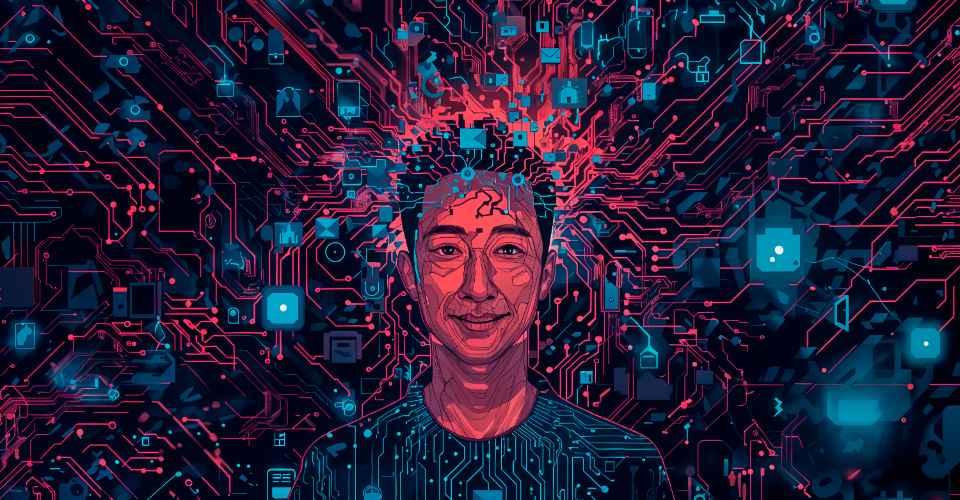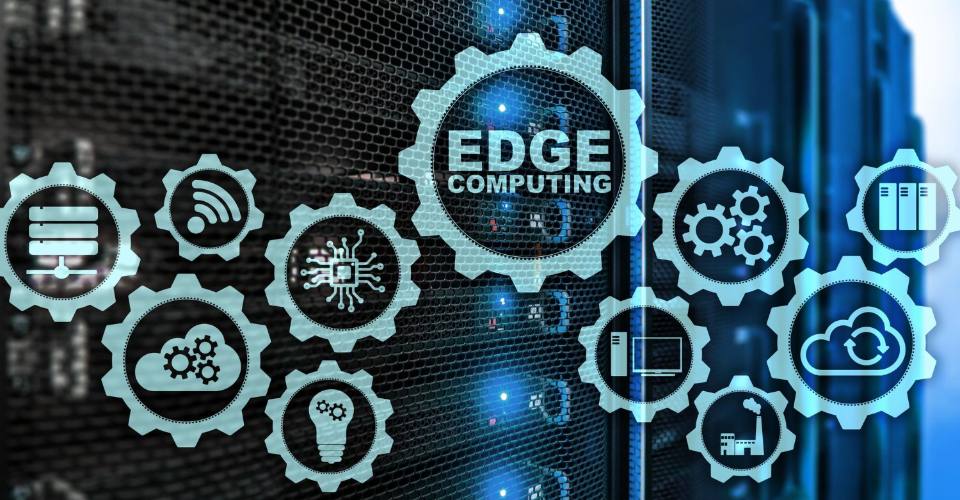The Spark of a New AI Revolution
Imagine a world where machines not only process data but also learn, adapt, and think in ways similar to the human brain. This is the promise of neuromorphic computing, a technology that draws inspiration from the brain’s biological architecture. It’s an exciting leap forward for artificial intelligence (AI), potentially transforming industries by making machines more efficient, adaptable, and energy-conscious. In this article, we will explore how neuromorphic computing is set to revolutionize AI, why it’s essential for the future of cognitive computing, and what lies ahead in this innovative field.
Understanding Neuromorphic Computing: A New Frontier in AI
Neuromorphic computing is not just another AI breakthrough; it represents a fundamental shift in how we design and think about intelligent systems. While traditional computing relies on sequential processing and logical computations, neuromorphic systems mimic the brain’s biological networks to enable real-time, parallel processing. These systems emulate how biological neurons communicate through synapses, unlocking possibilities that are more aligned with human cognition.
Key Features of Neuromorphic Computing
- Biological Neural Networks: At the heart of neuromorphic computing is the attempt to replicate the brain’s architecture, including neurons, synapses, and the connections between them.
- Artificial Synapses and Neurons: These components process and transmit information in a manner similar to the brain, ensuring efficient and rapid decision-making.
- Parallel Processing: Unlike traditional sequential processing, neuromorphic systems handle multiple tasks simultaneously, similar to how the brain manages real-world data.
The Evolution of Computing: From Traditional Systems to Neuromorphic Systems
Computing has come a long way since its inception. Early computers, based on the von Neumann architecture, were limited in how they processed tasks—sequentially, one at a time. While this method worked for simple calculations, it struggled with more complex tasks like natural language processing and pattern recognition. With the rise of AI, these traditional systems became inefficient in managing the real-time, adaptive tasks that modern applications demand.
Neuromorphic computing is bridging this gap, offering a promising solution by mimicking the structure of biological neural networks. By introducing cortical processors that emulate brain-like structures, neuromorphic computing promises a new era of efficient, high-performance AI.
Core Components of Neuromorphic Systems
Neuromorphic computing is a revolutionary approach to artificial intelligence (AI) that mimics the architecture and function of the human brain. Understanding the core components of neuromorphic systems is essential to appreciate how they work and their potential for transforming AI. These systems consist of artificial neurons, artificial synapses, and neural networks. Together, these components replicate biological neural processes, allowing neuromorphic systems to perform complex computations efficiently.
1. Artificial Neurons: Replicating Biological Neural Functions
Artificial neurons are the fundamental units of neuromorphic systems, modeled after the biological neurons found in the human brain. In biological systems, neurons transmit information through electrical impulses (spikes), and artificial neurons do the same, processing and encoding information in the form of electrical spikes. These artificial neurons are designed to mimic the brain’s ability to process sensory inputs and perform cognitive tasks.
- Spike-Based Activity: Like biological neurons, artificial neurons in neuromorphic systems communicate by sending and receiving electrical spikes. These spikes represent data points, allowing the system to process information more efficiently.
- Parallel Processing: Artificial neurons work in parallel, mimicking the brain’s capability to process multiple streams of data simultaneously. This parallelism is crucial for real-time processing, as it allows neuromorphic systems to respond instantly to changes in the environment, much like how the human brain reacts to sensory stimuli.
- Speed and Efficiency: By using artificial neurons, neuromorphic systems can operate faster and more efficiently than traditional digital computers. This efficiency is crucial for AI applications that require low-latency decision-making, such as robotics, self-driving cars, and real-time data analytics.
2. Artificial Synapses: The Bridges of Learning and Adaptation
Artificial synapses are another core component of neuromorphic systems, mimicking the connections between biological neurons in the human brain. These artificial synapses are responsible for transmitting signals between artificial neurons, just as biological synapses connect neurons and enable communication.
- Synaptic Plasticity: One of the key features of artificial synapses is their ability to adjust their strength based on previous activity. This process, known as synaptic plasticity, is the basis of learning in both biological and artificial systems. When a synapse strengthens or weakens in response to certain stimuli, it enables the system to learn from its experiences, adapting to new inputs and evolving over time.
- Learning Without Explicit Programming: Unlike traditional AI systems that rely on pre-programmed rules, neuromorphic systems learn autonomously. Artificial synapses adjust their strength based on the data they encounter, enabling the system to recognize patterns, make decisions, and predict outcomes without explicit programming. This ability is particularly useful in dynamic environments where the system needs to adapt in real time.
- Energy Efficiency: The energy consumption of artificial synapses is also much lower compared to traditional AI systems. Since they only activate when necessary, neuromorphic systems are highly energy-efficient, consuming a fraction of the power required by conventional digital computers.
3. Neural Networks: Interconnected Intelligence
Neural networks in neuromorphic computing are composed of interconnected artificial neurons and synapses, forming complex systems that can process vast amounts of information simultaneously. These networks mimic the structure of the human brain’s cortical processors, which are responsible for higher cognitive functions such as thinking, learning, and decision-making.
- Distributed Processing: Like the brain’s cortical processors, neuromorphic neural networks enable distributed processing across multiple nodes, allowing for parallel computation. This enables the system to solve complex problems more efficiently and handle multiple tasks at once, making it ideal for AI applications that require fast, real-time processing.
- Neuro-Inspired AI: The interconnected nature of neuromorphic neural networks provides the foundation for neuro-inspired AI. These AI systems are designed to emulate the brain’s learning and decision-making processes, which are more flexible and adaptable than traditional rule-based AI systems. By learning from experience, these systems can improve over time and make better predictions in the face of new or uncertain data.
- Adaptation and Flexibility: Through their neural network architecture, neuromorphic systems can adapt to changing inputs and learn new patterns without the need for reprogramming. This adaptability is one of the reasons why neuromorphic computing is so promising for applications such as robotics, autonomous systems, and intelligent assistants.
4. Cortical Processors: Simulating Brain-Like Computation
Cortical processors are specialized components of neuromorphic systems that simulate the brain’s cortical structure. The cortex is the outermost layer of the brain, responsible for higher-order cognitive functions such as perception, decision-making, and problem-solving.
- Brain-Like Functionality: Neuromorphic cortical processors replicate the brain’s ability to perform complex tasks such as pattern recognition, motor control, and sensory processing. These processors use artificial neurons and synapses to simulate the brain’s cognitive functions, enabling AI systems to handle more sophisticated tasks with greater efficiency and accuracy.
- Integration with Biological Models: Neuromorphic cortical processors integrate biological models of learning and memory to enhance AI systems. These processors can simulate neural behaviors such as sensory perception and memory retention, enabling AI systems to learn from past experiences and adjust their responses accordingly.
5. Applications of Neuromorphic Computing
The core components of neuromorphic systems—artificial neurons, synapses, neural networks, and cortical processors—combine to create highly efficient, adaptable, and brain-like AI systems. These systems can be applied to a wide range of fields, including:
- Autonomous Systems: Neuromorphic computing enables real-time processing and decision-making for autonomous vehicles, drones, and robots. By mimicking the brain’s cognitive processes, neuromorphic systems can help machines navigate complex environments, adapt to new situations, and make decisions with minimal human intervention.
- Healthcare: Neuromorphic systems can be used in medical devices and diagnostic tools to analyze complex patterns in data, such as medical images or genetic information. These systems can help doctors make more accurate diagnoses and develop personalized treatment plans based on the patient’s unique needs.
- Smart Devices: Neuromorphic computing is also driving the development of smarter consumer electronics. Devices like smartphones, wearables, and home assistants can become more efficient, responsive, and intelligent, offering users a more personalized experience.
Technologies Powering Neuromorphic Computing
Neuromorphic computing wouldn’t be possible without the cutting-edge technologies that power it. Companies like IBM and Intel are leading the way with neuromorphic chips, such as TrueNorth and Loihi, which are designed to emulate the brain’s architecture.
- IBM TrueNorth: TrueNorth features over a million artificial neurons and 256 million synapses, enabling parallel processing tasks such as image recognition and sensory processing with remarkable efficiency.
- Intel Loihi: Loihi is another neuromorphic chip designed to support real-time learning and adaptation of neural networks, making it ideal for dynamic applications like robotics and autonomous systems.
These chips represent the future of AI, allowing systems to perform complex tasks with a fraction of the energy consumption required by traditional processors.
Cross-Disciplinary Impact of Neuromorphic Computing
Neuromorphic computing isn’t just a product of computer science; it’s a cross-disciplinary field that integrates neuroscience, engineering, and material science to bring brain-like processing to machines.
- Neuroscience: The foundation of neuromorphic computing lies in our understanding of how the brain works. Insights from neuroscience, such as synaptic plasticity and spiking neural networks (SNNs), inform the design of neuromorphic systems, enabling machines to learn and adapt in real-time.
- Engineering: Engineers are tasked with creating specialized hardware to replicate the brain’s functions. New technologies, like memristors, are key to developing more efficient neuromorphic systems.
- Material Science: Researchers are also exploring new materials that better mimic the properties of biological synapses. This could lead to neuromorphic hardware that is even more versatile and efficient.
5 Ways Neuromorphic Computing Is Transforming AI
Neuromorphic computing, a rapidly advancing field inspired by the structure and function of the human brain, is reshaping the future of artificial intelligence (AI). By emulating the brain’s complex neural networks and cognitive abilities, neuromorphic systems promise to overcome the limitations of traditional computing architectures. These brain-like systems have vast potential to revolutionize AI by improving efficiency, adaptability, and performance. In this article, we explore five significant ways neuromorphic computing is transforming the world of AI.
1. Enhanced Energy Efficiency in AI Systems
One of the most notable features of neuromorphic computing is its ability to replicate the human brain’s extraordinary energy efficiency. The brain, despite processing vast amounts of information, consumes only about 20 watts of power — roughly the same as a dim light bulb. In contrast, conventional AI systems, especially those based on deep learning models, consume far more energy, often requiring tens of thousands of watts for large-scale computations. Neuromorphic computing offers a way to reduce this energy consumption dramatically.
- Energy Savings: Neuromorphic chips are designed to function with ultra-low power, using specialized circuits to mimic the brain’s activity. For example, Intel’s Loihi chip operates with a fraction of the energy required by traditional AI processors, offering up to a 1,000-fold energy efficiency improvement for specific tasks like pattern recognition and sensory processing.
- Sustainability: As AI systems become more integrated into everyday devices and systems, the need for energy-efficient computing becomes more critical. brain-inspired computing opens up the possibility for large-scale deployment of AI systems without the environmental burden of excessive power usage, making AI more sustainable for long-term applications.
This energy-efficient approach is essential for AI deployment in edge devices such as autonomous cars, drones, and IoT sensors, where limited energy resources must be balanced with the need for rapid, real-time data processing.
2. Improved Real-Time Processing and Adaptability
Traditional AI systems often struggle with real-time processing and adaptability to changing environments. This is where neuromorphic computing truly excels, mimicking the brain’s ability to adapt quickly to new inputs and perform parallel processing.
- Parallel Processing: Unlike traditional sequential computing, which processes tasks one at a time, neuromorphic systems leverage parallel processing, similar to the brain’s network of neurons. This enables AI systems to process multiple streams of data simultaneously, improving speed and responsiveness.
- Real-Time Learning: Neuromorphic systems excel in tasks that require real-time learning and decision-making. For example, when deployed in autonomous systems, neuromorphic processors allow for rapid adaptation to new stimuli and situations, much like the brain reacts instantly to changes in the environment. This ability to learn continuously and in real-time is a game-changer for applications in robotics, self-driving cars, and smart cities.
Research by IBM’s TrueNorth chip demonstrates how neuromorphic systems can handle tasks like sensory processing and image recognition more efficiently than traditional models, with up to 10 times faster response times in complex decision-making tasks.
3. Neuro-Inspired AI for Advanced Pattern Recognition
Pattern recognition is at the heart of many AI applications, from facial recognition systems to medical diagnostics. While traditional AI models have made strides in this area, neuromorphic computing is opening up new frontiers in the speed and accuracy of pattern recognition, by emulating the brain’s ability to recognize patterns in noisy or incomplete data.
- Spike-Based Processing: Neuromorphic chips utilize spike-timing-dependent plasticity (STDP), a mechanism that mimics the way synapses strengthen or weaken over time. This enables the system to learn and recognize patterns in real-time, much like how the brain recognizes faces or objects by analyzing and comparing various features.
- Real-World Applications: In fields like healthcare, brain-inspired computing can revolutionize the detection of anomalies in medical imaging, such as identifying early signs of cancer or neurological conditions. The brain’s ability to detect patterns in sensory data has been effectively replicated in neuromorphic systems, offering higher accuracy and reduced false positives.
According to a study published by Nature Communications, neuromorphic systems have shown 30% higher accuracy in pattern recognition tasks compared to conventional deep learning algorithms, making them highly suited for dynamic, complex environments.
4. Smarter AI Systems for Cognitive Computing
Cognitive computing refers to systems that can simulate human thought processes in a digital environment. Neuromorphic computing takes cognitive computing to the next level by enabling machines to think, learn, and reason like humans.
- Neuro-Inspired Models: Neuromorphic systems allow for the creation of more sophisticated, brain-like AI models capable of cognitive tasks like decision-making, problem-solving, and understanding context. These models don’t just follow predefined instructions; they adapt and reason based on new information.
- Interactive Systems: Neuromorphic systems are also highly adept at managing the types of open-ended, contextual decision-making that characterize human cognition. For instance, chatbots and virtual assistants powered by brain-inspired computing can better understand complex, ambiguous language inputs, leading to more human-like interactions.
Incorporating neuromorphic processors into cognitive computing systems can revolutionize industries like education, healthcare, and customer service by providing AI that can reason, interpret, and provide more personalized responses to users’ needs.
5. Accelerating AI Research and Development
Neuromorphic computing is helping to accelerate AI research by enabling more sophisticated simulations of brain-like processes. The ability to replicate neural networks and simulate cognitive processes on neuromorphic chips can help researchers better understand how the brain works, leading to new breakthroughs in both AI and neuroscience.
- Faster Prototyping: Traditional AI development often involves lengthy training processes and simulations, which can take weeks or months. brain-inspired computing offers a more efficient approach, speeding up the development of AI models by allowing researchers to test and iterate in real-time, using systems that closely mimic the brain’s behavior.
- Collaborative Advances: Neuromorphic systems are also fostering greater collaboration between neuroscience and AI research. By building models that more closely mimic biological brains, researchers are unlocking insights into both fields. For example, neuromorphic research is helping neuroscientists study brain diseases such as Alzheimer’s by providing a better understanding of neural connections and patterns.
As reported by the Stanford AI Lab, neuromorphic computing is accelerating AI research by providing a more realistic, biologically inspired approach to problem-solving. This innovation is expected to shorten the development timeline for new AI technologies, making them available for real-world applications more quickly.
The Future of Neuromorphic Computing
As we look to the future, neuromorphic computing holds immense potential across a variety of fields.
- AI Systems of the Future: Neuromorphic computing is set to play a crucial role in the development of next-generation AI systems. These systems will be able to process data more efficiently and adapt more quickly than current models.
- Cognitive Computing: One exciting possibility is the creation of cognitive computing systems that can think, learn, and reason like humans. Such systems could revolutionize healthcare, education, and more.
- Ethical AI: By emulating the brain’s natural processes, brain-inspired computing offers a path to more ethical AI systems, which align closely with human values and ethics.
Key Takeaways
- Neuromorphic computing mimics the brain’s architecture to create more efficient, adaptive AI systems.
- Unlike traditional computing, neuromorphic systems process information in parallel, enabling real-time, low-power computation.
- The field combines advances in neuroscience, engineering, and material science, and has the potential to revolutionize AI in the future.
- With companies like IBM and Intel leading the charge, neuromorphic computing is poised to transform industries from healthcare to robotics.
At a Glance
- What is Neuromorphic Computing? It’s a technology that mimics the brain’s neural networks to improve AI efficiency and adaptability.
- Key Components: Artificial neurons, synapses, and neural networks.
- Technologies Involved: IBM TrueNorth, Intel Loihi, and advanced memristors.
- Future Impact: Advanced AI, cognitive computing, and ethical AI systems.
FAQs
1. What makes neuromorphic computing different from traditional computing? Neuromorphic computing mimics the brain’s architecture, allowing for real-time, parallel processing, unlike traditional systems that process data sequentially.
2. How can neuromorphic computing impact AI development? By providing more efficient, adaptive systems, neuromorphic computing can make AI smarter and more energy-efficient, enabling real-time learning and decision-making.
3. What are the core components of neuromorphic systems? Artificial neurons, synapses, and neural networks form the foundation of neuromorphic systems, enabling brain-like information processing.
Conclusion: The Path Ahead for Neuromorphic Computing
Neuromorphic computing is transforming the way we think about AI. By mimicking the brain’s natural processes, it’s pushing the boundaries of what’s possible in machine learning, cognitive computing, and ethical AI. As the technology continues to evolve, it’s clear that brain-inspired computing will play a crucial role in the future of AI, making systems smarter, more efficient, and capable of tasks we once thought only humans could perform. The future is exciting, and neuromorphic computing is at the forefront of this revolutionary change.



















Leave a Reply